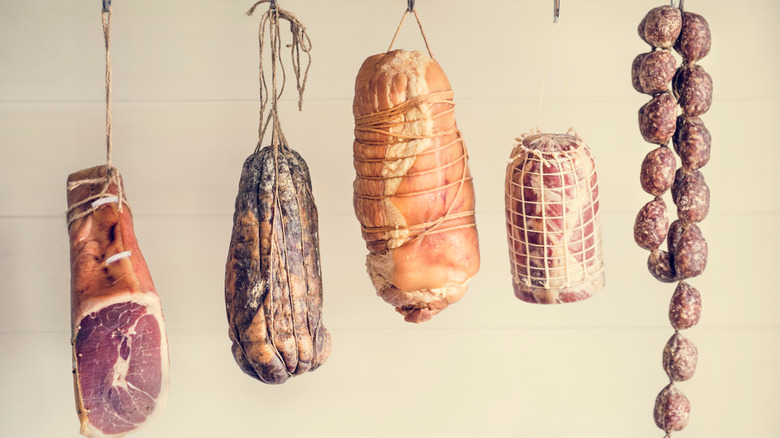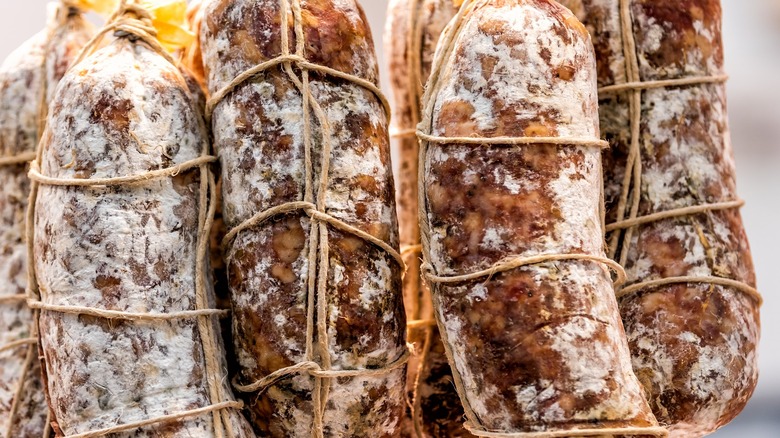The Fatty Difference Between Salami And Soppressata
There are hundreds of Italian dry cured meats with two of the most popular being salami and soppressata. The two are related but there are differences in how they're processed, seasoned, and cured. Salami can be a confusing term and locating the delicious sample you tried on a charcuterie board can be daunting. This is because salami comes from the Italian word "salame," a catch-all term for cured sausages, and different artisans use household recipes that they use to cure the meat.
Salami is an Italian cured sausage that is primarily made with pork, though veal, beef, or other meats can be used. Soppressata is a leaner version of salami that has a different processing and curing process. Salami is a mixture of fine ground lean pork, fat, and spices, and the fat content ratio ranges between 60:40 or 70:30. The spices vary depending on the region but are generally salt, black pepper, red pepper, rosemary, and basil.
Soppressata, meanwhile, is made with coarser and leaner chunks of pork from the haunches, shoulder, and filets and blended with seasonings including fennel, garlic, and red wine. It is spicier than salami and has a deeper red color than salami. Soppressata is also oblong in shape and salami is more cylindrical, because of the way it's processed.
Salami and soppressata processing and curing methods
The difference in flavor between salami and soppressata goes beyond the added fat of the salami and the seasoning. The different processing and curing methods play an integral role in the texture and the flavors of the finished product. Soppressata has a coarser texture due to the chunkier meat and because it is cut with a knife, while salami is usually ground using a commercial grinder. Once prepared, both are stuffed into intestine casings for curing, but the soppressata is pressed, usually with a wooden plank, to release any air bubbles, which is how it gets its shape.
After the meats are wrapped, they are hung up to cure. Salami and soppressata both cure between 4-6 weeks, depending on the artisan. Both are infused with unique flavors from the entire process and use similar seasonings, but the fat content gives the salami a milder flavor while the lack of fat in soppressata allows the spices to give it a more full-bodied flavor.

